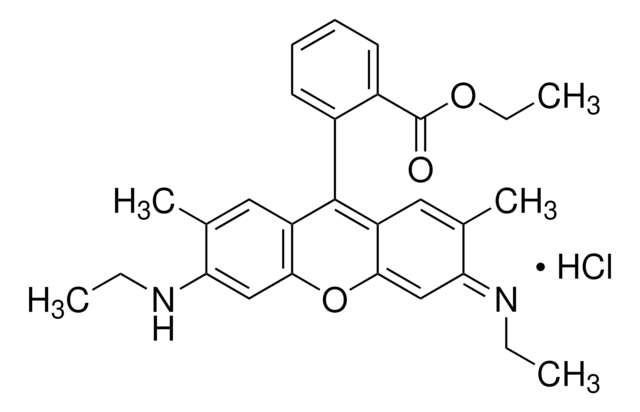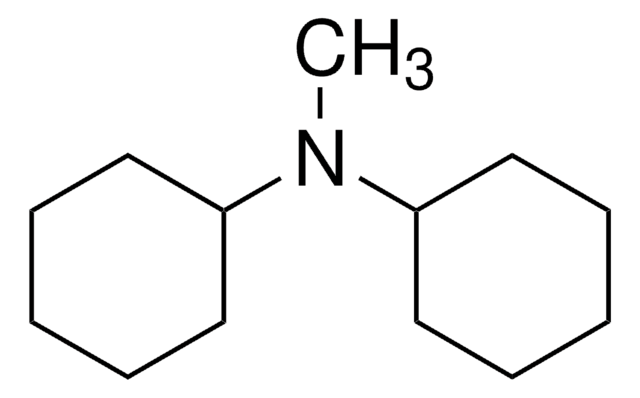41690
4,N,N-Trimethylanilin
catalyst grade (for peroxide polymerization), ≥98.5% (GC)
Synonym(e):
N,N-Dimethyl-p-Toluidin
About This Item
Empfohlene Produkte
Qualität
catalyst grade (for peroxide polymerization)
Qualitätsniveau
Dampfdichte
>1 (vs air)
Assay
≥98.5% (GC)
Form
liquid
Expl.-Gr.
7 %
Brechungsindex
n20/D 1.546 (lit.)
n20/D 1.547
bp
211 °C (lit.)
90-92 °C/10 mmHg (lit.)
Dichte
0.936 g/mL at 20 °C
0.937 g/mL at 25 °C (lit.)
Funktionelle Gruppe
amine
SMILES String
CN(C)c1ccc(C)cc1
InChI
1S/C9H13N/c1-8-4-6-9(7-5-8)10(2)3/h4-7H,1-3H3
InChIKey
GYVGXEWAOAAJEU-UHFFFAOYSA-N
Suchen Sie nach ähnlichen Produkten? Aufrufen Leitfaden zum Produktvergleich
Verwandte Kategorien
Allgemeine Beschreibung
Anwendung
- Charge-transfer complexes for redox polymerization: 4,N,N-Trimethylaniline used for on-demand amine/peroxide redox polymerization. This research offers a new perspective on the use of 4,N,N-Trimethylaniline in creating controlled polymer structures, which is crucial for various industrial and pharmaceutical applications (Garra et al., 2018).
Vorsicht
Signalwort
Danger
Gefahreneinstufungen
Acute Tox. 2 Inhalation - Acute Tox. 3 Dermal - Acute Tox. 3 Oral - Aquatic Chronic 3 - Carc. 1B - Repr. 2 - Skin Sens. 1 - STOT RE 2 Oral
Zielorgane
Reproductive organs
Lagerklassenschlüssel
6.1A - Combustible acute toxic Cat. 1 and 2 / very toxic hazardous materials
WGK
WGK 3
Flammpunkt (°F)
168.8 °F - closed cup
Flammpunkt (°C)
76 °C - closed cup
Persönliche Schutzausrüstung
Eyeshields, Faceshields, Gloves, type ABEK (EN14387) respirator filter
Hier finden Sie alle aktuellen Versionen:
Besitzen Sie dieses Produkt bereits?
In der Dokumentenbibliothek finden Sie die Dokumentation zu den Produkten, die Sie kürzlich erworben haben.
Unser Team von Wissenschaftlern verfügt über Erfahrung in allen Forschungsbereichen einschließlich Life Science, Materialwissenschaften, chemischer Synthese, Chromatographie, Analytik und vielen mehr..
Setzen Sie sich mit dem technischen Dienst in Verbindung.









